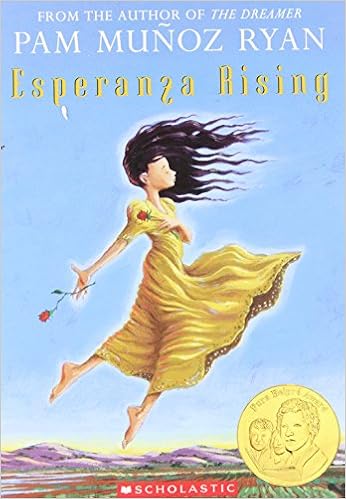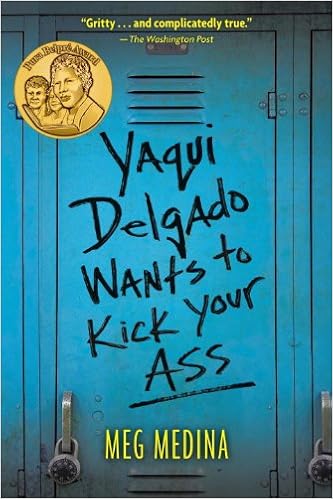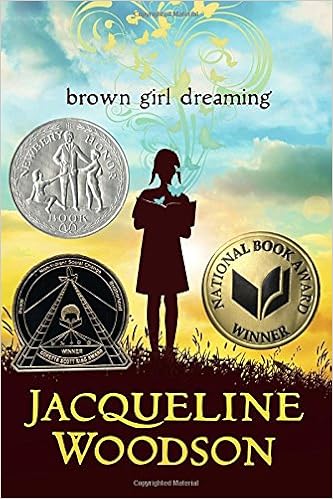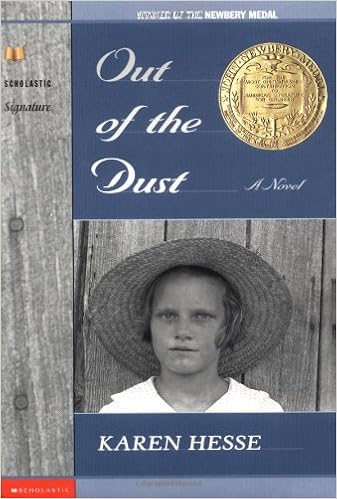
Florian, Douglas. 2004. Omnibeasts. New York: Harcourt, Inc. ISBN 0152050388
Plot Summary
Omnibeasts is a compilation
of animal poetry and paintings by Douglas Florian. The range of animals
represented draws from the common caterpillar to the never-heard-of-it-before jaguarundi
(apparently a kind of wild cat). Each poem is paired with a colorful picture of
the subject animal. The reader will delight in each separate poem, like tapas in Spain.
Critical Analysis
Omnibeasts is a
thematic collection of animal poems, both written an illustrated by Douglas Florian.
There is a table of contents to guide you to each animal.
On the poetry side of each spread, Florian takes an animal,
boils it down to an essential element, then playfully uses a variety of word
manipulations and devices to bring the animal and the reader together. Some of the
frequent literary devices Florian uses are
·
rhyme, both internal and end-line
·
alliteration-- “Clever. / Cunning. / Crafty.”
(from “The Fox”)
·
homophones—“All day I pray / For prey to view”
(from “the Hawk”)
·
wordplay—“pet-igree” (from “The Persian")
There were a couple of poems that really got me chuckling,
like “The Jaguarundi,” in which the accompanying illustration provided a comedic
boost to the text itself. There were a few groans, when it seemed as though Florian
were pulling out a “dad joke,” like in “The Walrus” (walrusty, ha!) or the "kangaroom" in “The Kangaroo.”
Florian also occasionally employs concrete poems to achieve the
effect he wants, such as in “The Salmon,” where the reader can feel his eyes
jumping up the page as a Salmon would up a stream, or when the shape of “The
Porcupine” makes the reader want to carefully, gingerly run his fingers along
the spines.
The colorful, watercolor paintings that accompany each poem help
to breathe additional life into the text. Each piece of art is one that I would
gladly frame in my children’s playroom. The paintings add to the playful, fun
nature of the poems themselves, leaving the reader with a rich lyrical and visual aftertaste that will keep you
begging for more. Fortunately, the last page of the book displays seven thematic
books by Florian that can help satisfy your craving.
Professional Reviews
From School Library
Journal: “With selections from seven of Florian's successful
collections of creature poetry, Omnibeasts is a treasure chest of wit and charm.”
From Booklist: “The
varied, witty selection, comprising some of Florian's best work, is just right
for libraries that can afford to buy only one volume.”
Connections
Here are some of the original books where you can find Florian's humor and art:
on the wing (2000) ISBN 978-0152023669

beast feast (1998) ISBN 978-0152017378

Comets, Stars, the Moon and Mars (2007) ISBN 978-0152053727

Here are some other fun poetry books for kids:
Underwear Salesman (2009), J. Patrick Lewis ISBN 978-0689853258

A Curious Collection of Cats (2009), Betsy Franco ISBN 978-1582462486

The Hound Dog's Haiku (2011), Michael J. Rosen ISBN 978-0763644994

































